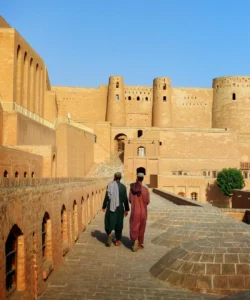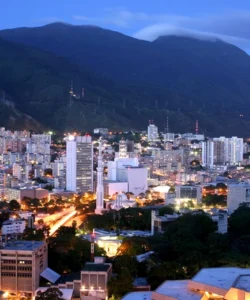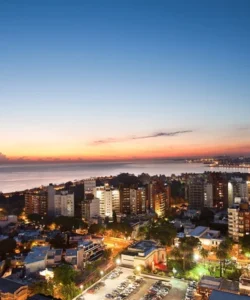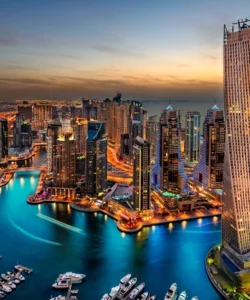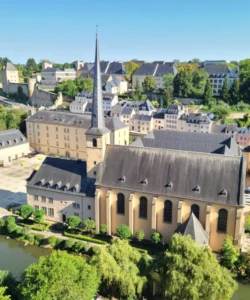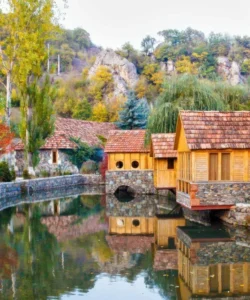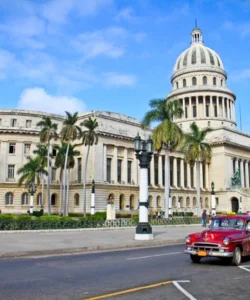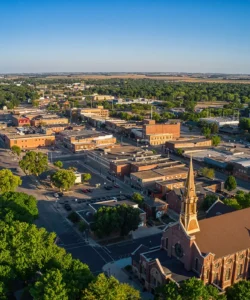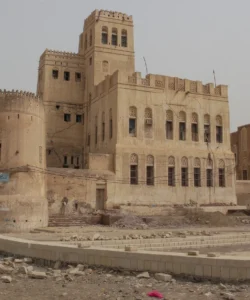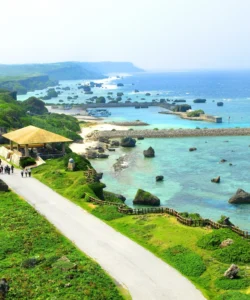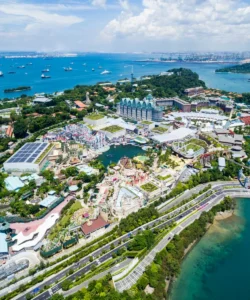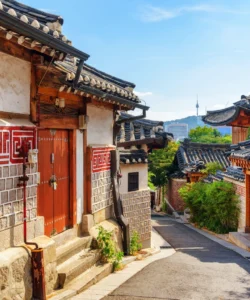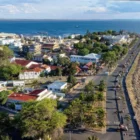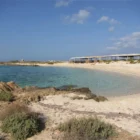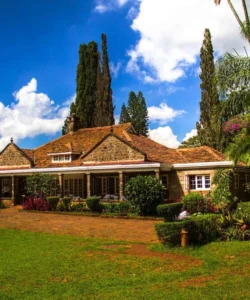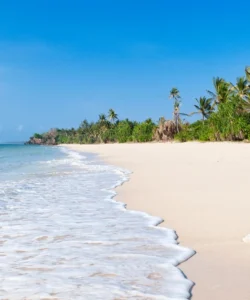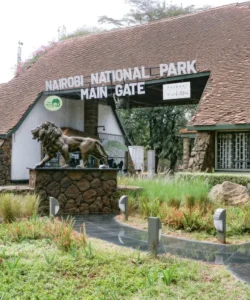George Town, located on Penang Island off the west coast of Peninsular Malaysia, is a vibrant and historically rich city that serves as the capital of the state of Penang. It is a captivating blend of old-world charm and contemporary creativity, renowned for its multicultural heritage, unique architecture, and world-famous street food.
Listen to an introduction about George Town

Name: George Town
Address: George Town is located on the northeastern tip of Penang Island, Malaysia. Its historical core is bounded by the Straits of Malacca to the northeast, and specific streets like Lorong Love, Gat Lebuh Melayu, Lorong Carnarvon, and Lebuh Carnarvon to the northwest and southwest. The city’s main entry point from the mainland is via the Penang Bridge or the ferry from Butterworth.
How to Get There:
- By Air: The most common way for international and domestic travelers is to fly into Penang International Airport (PEN), which has direct flights from various cities in Malaysia, Southeast Asia, and beyond. From the airport, George Town is about a 30-45 minute taxi or Grab ride. There are also public buses available.
- By Train + Ferry: Take a KTM Komuter or ETS train from Kuala Lumpur (KL Sentral) to Butterworth Railway Station (approximately 4-4.5 hours). From Butterworth, the Sultan Abdul Halim Ferry Terminal is right next to the train station. Take the passenger ferry across to George Town (Penang) at Raja Tun Uda Ferry Terminal, which takes about 15-20 minutes. The ferry ride itself offers great views.
- By Bus: Long-distance buses from Kuala Lumpur (TBS) and other major Malaysian cities arrive at Sungai Nibong Express Bus Terminal on Penang Island. From there, you’ll need a local bus, taxi, or Grab to George Town.
- By Car: You can drive to Penang via the Penang Bridge (a toll bridge) from the mainland. Once on the island, George Town is well-signposted. Parking within the heritage zone can be challenging but paid parking lots are available.
- Getting Around George Town: The historical core of George Town is highly walkable. Other popular ways to explore include:
- Walking: The best way to discover hidden alleys, street art, and shophouses.
- Bicycle Rental: Many guesthouses and shops offer bicycle rentals.
- Trishaw (Cycle Rickshaw): A traditional and charming way to explore, often with a local guide.
- Rapid Penang Buses: An extensive public bus network covers the entire island.
- CAT (Central Area Transit) Free Shuttle Bus: A free shuttle bus operates within the core heritage zone.
Landscape and Architecture:
George Town’s landscape is a fascinating urban tapestry, primarily defined by its architecture, which reflects centuries of diverse cultural influences.
- Colonial Architecture: As a former British trading post, George Town boasts a wealth of colonial-era buildings. Examples include the grand Penang City Hall and Town Hall (Victorian and Edwardian Baroque styles), St. George’s Church (the oldest Anglican church in Southeast Asia), Fort Cornwallis, and the iconic Eastern & Oriental Hotel (E&O Hotel), a symbol of colonial opulence.
- Chinese Shophouses: The most ubiquitous and iconic architectural style in George Town are the traditional Chinese shophouses. These narrow, two- or three-story buildings typically feature a commercial space on the ground floor and living quarters above. They blend Chinese architectural elements (like U-shaped terracotta roofs, butterfly-shaped air vents, intricate carvings) with European features (neoclassical arches, colonial columns), creating the distinct “Straits Eclectic” style. Many have been beautifully restored and repurposed as cafes, boutiques, and guesthouses.
- Peranakan Mansions: The homes of wealthy Peranakan (Straits Chinese) families are some of the most lavish architectural examples. The Pinang Peranakan Mansion and Cheong Fatt Tze Mansion (The Blue Mansion) are stunning examples, showcasing a blend of Chinese, Malay, and European styles, with ornate wood carvings, porcelain tiles, grand courtyards, and vibrant colors.
- Religious Architecture: George Town is a melting pot of religions, evident in its diverse places of worship coexisting harmoniously:
- Chinese Temples: Kuan Yin Temple, Khoo Kongsi (an elaborate Chinese clanhouse), Hainan Temple.
- Indian Temples: Sri Mahamariamman Temple (the oldest Hindu temple in George Town).
- Mosques: Kapitan Keling Mosque (the largest mosque in the city).
- Churches: St. George’s Church, Assumption Church.
- Clan Jetties: Unique “floating villages” built on stilts along Weld Quay by early Chinese immigrants, where each jetty is named after a clan surname (e.g., Chew Jetty, Lim Jetty). They offer a glimpse into a traditional way of life on the water.
- Street Art and Murals: In recent years, George Town has become an open-air art gallery, famous for its whimsical and thought-provoking street art and murals, particularly those by Lithuanian artist Ernest Zacharevic, which often incorporate real objects, adding a contemporary artistic layer to the historic urban landscape.
What Makes It Famous:
- UNESCO World Heritage Site: In 2008, George Town (along with Malacca) was inscribed as a UNESCO World Heritage Site for its “Outstanding Universal Value” as a multicultural trading town that embodies a succession of historical and cultural influences, creating a unique architecture, culture, and townscape.
- Multicultural Heritage: It’s a living testament to the coming together of Malay, Chinese, Indian, and European cultures. This fusion is evident in its people, languages, religions, festivals, food, and architecture.
- Street Art Capital: George Town’s vibrant and interactive street art scene has gained international acclaim, attracting visitors who enjoy hunting for the famous murals and iron-rod caricatures.
- Food Paradise (Hawker Food): George Town is widely regarded as Malaysia’s food capital, particularly famous for its incredible hawker (street) food. The fusion of Malay, Chinese, Indian, and Peranakan cuisines has resulted in a dizzying array of delicious and affordable dishes like Char Koay Teow, Asam Laksa, Nasi Kandar, Hokkien Mee, and more.
- Preserved Heritage Architecture: The city boasts one of the best-preserved collections of pre-war buildings, shophouses, and mansions in Southeast Asia, offering a tangible link to its colonial and mercantile past.
- “Living Museum”: George Town is often described as a “living museum” where traditional trades (e.g., joss stick makers, shoemakers, trishaw makers) and local artisans still practice their crafts alongside modern businesses.
Differences from Some Other Wonders:
- Urban Heritage over Natural Wonders: Unlike Malaysia’s national parks (Taman Negara, Malolotja) or island paradises (Perhentian Islands, Redang Island) that celebrate natural landscapes and wildlife, George Town’s fame is rooted in its urban historical and cultural landscape. It’s a city, not a wilderness.
- UNESCO Status for Multicultural Urban Fabric: While Mount Kinabalu is a UNESCO Natural Heritage site for its biodiversity, George Town’s UNESCO inscription specifically highlights its multicultural urban heritage, unique blend of architecture, and living traditions as a former trading hub.
- Street Art as a Defining Feature: While art can be found elsewhere, the scale, integration, and fame of George Town’s interactive street art scene are unparalleled in most other “wonder” cities, transforming its historic walls into a contemporary gallery.
- Food as a Primary Attraction: While all Malaysian destinations offer good food, George Town’s reputation as a culinary mecca, particularly for its diverse and authentic street food, is often the primary draw for many visitors, more so than any other single attraction.
- Walkability and Lack of Motorized Dominance (within heritage zone): Unlike modern capitals (like Kuala Lumpur with its Petronas Towers), George Town’s historical core is remarkably walkable, with an emphasis on pedestrian exploration, trishaws, and bicycles, creating a different pace and atmosphere.
- “Living Heritage” Emphasis: Many heritage sites are preserved structures or museums. George Town stands out because its heritage (buildings, trades, communities) is still very much alive and functioning, with people living and working in the historical shophouses and traditional businesses operating alongside modern life.





































